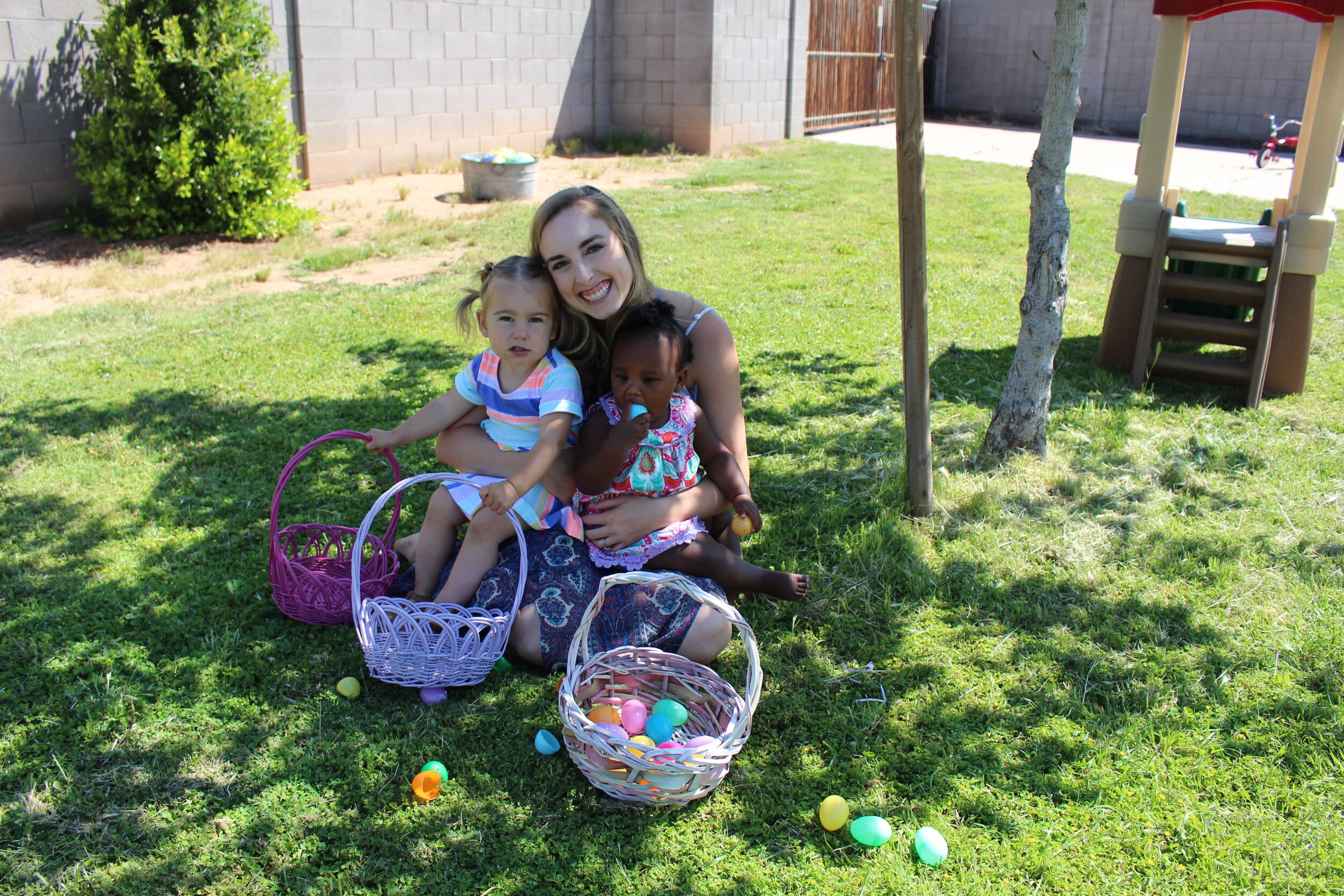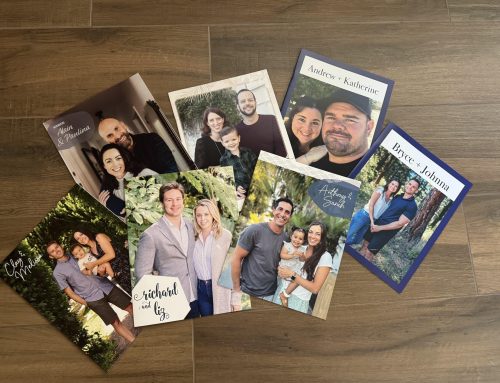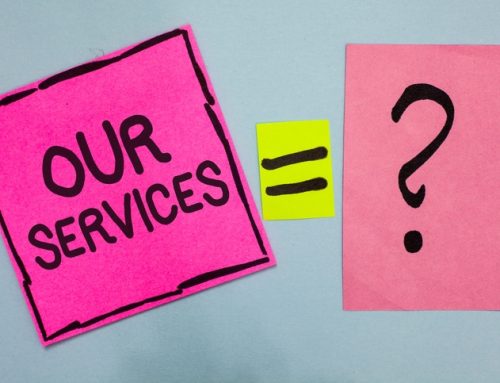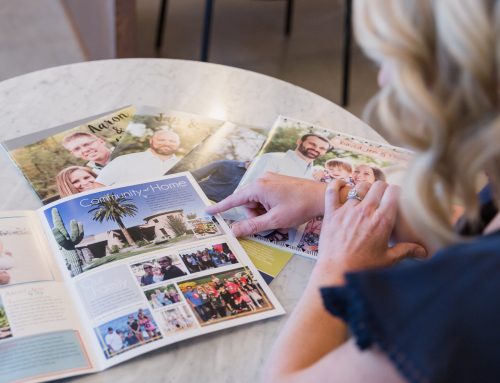
Ashley is a momma to her virtual twins, daughter’s Eden and Shiloh. As a former Purl family and previous blog contributor, Ashley is honored to return with her thoughts and experiences on open adoption. Though most days she is a stay-at-home momma, she contributes at Ataraxis Counseling LLC, where she supports women and mothers as a mental health therapist. You can follow along at Ataraxis_Counseling on IG, or at ataraxiscounseling.com.
—-
I have recently begun to walk the path of open adoption with my daughter’s birth mother, so I wanted to share my perspective on a topic commonly misunderstood. Many couples who are turning to adoption after infertility are often concerned and confused about what it means to have an open adoption today. In the discussion below, I will tackle these common misconceptions about open adoption. For your information, I first wanted to share some definitions of “open”, “semi-open” and “closed” adoption today, also included in Purl’s Glossary of Adoption Terms:
Open Adoption: A type of adoption that has increased in popularity since the 1980s, becominging widely available in the late 1990s. Both identifying and non-identifying information about the adoptive parents and the birth parents is typically shared with each other, which may include last names, addresses, and telephone numbers. Open adoption typically involves meeting sometime before or at the birth, and remaining in contact after placement through letters, pictures, other forms of communication and can include visits.
Semi-Open Adoptions: A form of adoption that is intentionally designed to be a combination of a more traditional closed adoption and an open adoption, and is still used today. Direct communication after the adoption is more limited, in the fashion that is agreed by the parties. Last names, addresses, and telephone numbers are usually not exchanged, while the sharing of photographs or other information for an agreed frequency and duration is common. Communication sometimes takes place through a third party, which is usually an adoption agency, an adoption attorney or a designated intermediary.
Closed Adoptions: This type of adoption is used rarely today in domestic adoptions, but was traditionally the type of adoptions seen before the 1980s. In these adoptions, the birth family and the adoptive family do not share typically share any identifying information about themselves, and do not communicate with each other, either before or after the placement of the child. The adoptive family willl typically receive some non-identifying health and other background information about the child and the birth family before the placement takes place. The birth parents may also receive non-identifying information about the adoptive parents.
What Open Adoption Isn’t
-
Open adoption is not co-parenting or sharing parental rights or decisions.
Though open adoption describes varying degrees of communication and contact with the determined biological family member(s), this can look different for each family. At the time of a match or after the birth of the child, the birth family and adoptive family typically reach agreement on for their desired communication and contact. But all legal and medical decisions are fully made by the adoptive family. Open adoption does not mean sharing custody of the child or sharing any parental rights. -
Open adoption is not a means of eradicating complicated feelings of grief and loss for the adoptee.
Though there have been many studies showing that open adoption and maintaining healthy relationships with biological family members post-adoption can help an adoptee with identity issues and subjugate some feelings of loss, there will likely be difficult feelings including complicated grief for the adoptee as he or she develops a life narrative. Though “adoption professionals generally agree that the child will be least confused when the open relationship between the adoptive and biological parents is clear and positive” (Berry, 1993), there will likely still be feelings of loss and identity exploration. Angela Tucker, adoptee and adoptee advocate has many great blog posts about this on her website, The Adopted Life; specifically, the blog post entitled: “Are You My Mother?”
-
Open adoption does not necessarily lessen the stings of infertility and loss.
It can be very rewarding and fulfilling to walk the journey of pregnancy with an expectant mother: especially if one is invited to attend doctor appointments and celebrate together during ultrasounds. This kind of closeness is rare and very beautiful. But even feeling a child’s kicks within his mother and hoping that this child will be yours someday won’t take away the understandable grief of not being able to carry him yourself. There is important work to be done surrounding infertility and loss even if your open adoption brings a lot of healing.
-
Open adoption does not look the same for every family—nor does it always stay the same over time.
At first, my daughter’s first momma and I texted every day. We sent pictures and videos every morning, and video chatted at least once a week. This was the level of openness she and I desired and had agreed to. Over the months, the responses became fewer and slower and I respected her need for space. My own need to attach with my daughter those first few weeks took priority, and though I continued to text and call her first momma, I recognized my own need for some space as well. Now that my daughter is almost a year old, there is a satisfying rhythm between our communication. I expect it to change in frequency as my daughter ages. Our hope is that she’ll be able to call and video chat with her first momma as she grows up to foster connectedness in their relationship. Every family and their agreement looks unique. I have friends’ whose open adoptions include getting together during holidays and for birthdays. I have friends who physically visit their child’s biological family once a year if they live out of state. Because we do not live in the same state as my daughter’s birth mother, our communication and contact looks different. -
Open adoption is not for everyone.
Though the numbers are increasing for open adoptions, there are still many expectant families who do not choose open adoption. Some feel that openness exasperates feelings of grief and loss for both the adoptee and the biological family. Some adoptive parents still desire closed or semi-open relationships. I will say that though the adoptive families’ preferences and hopes for their child’s relationship with biological family are so important, it is crucial that the expectant mother’s desire for the open adoption and what is agreed upon in being matched is honored and upheld even as the years pass.
I do think it is important to add here that the degree of openness can change if circumstances and emotional health requires it. There are valid reasons an adoptive family makes boundaries and changes frequencies of contact for the health of the child.
Works Cited:
Berry, M. (1993). Risks and benefits of open adoption. The Future of Children, 125-138.
—-
For more on open adoption, check out Purl’s founder’s own perspective on My Journey to Open Adoption.

Ashley is a momma to her virtual twins, daughter’s Eden and Shiloh. As a former Purl family and previous blog contributor, Ashley is honored to return with her thoughts and experiences on open adoption. Though most days she is a stay-at-home momma, she contributes at Ataraxis Counseling LLC, where she supports women and mothers as a mental health therapist. You can follow along at Ataraxis_Counseling on IG, or at ataraxiscounseling.com.
—-
I have recently begun to walk the path of open adoption with my daughter’s birth mother, so I wanted to share my perspective on a topic commonly misunderstood. Many couples who are turning to adoption after infertility are often concerned and confused about what it means to have an open adoption today. In the discussion below, I will tackle these common misconceptions about open adoption. For your information, I first wanted to share some definitions of “open”, “semi-open” and “closed” adoption today, also included in Purl’s Glossary of Adoption Terms:
Open Adoption: A type of adoption that has increased in popularity since the 1980s, becominging widely available in the late 1990s. Both identifying and non-identifying information about the adoptive parents and the birth parents is typically shared with each other, which may include last names, addresses, and telephone numbers. Open adoption typically involves meeting sometime before or at the birth, and remaining in contact after placement through letters, pictures, other forms of communication and can include visits.
Semi-Open Adoptions: A form of adoption that is intentionally designed to be a combination of a more traditional closed adoption and an open adoption, and is still used today. Direct communication after the adoption is more limited, in the fashion that is agreed by the parties. Last names, addresses, and telephone numbers are usually not exchanged, while the sharing of photographs or other information for an agreed frequency and duration is common. Communication sometimes takes place through a third party, which is usually an adoption agency, an adoption attorney or a designated intermediary.
Closed Adoptions: This type of adoption is used rarely today in domestic adoptions, but was traditionally the type of adoptions seen before the 1980s. In these adoptions, the birth family and the adoptive family do not share typically share any identifying information about themselves, and do not communicate with each other, either before or after the placement of the child. The adoptive family willl typically receive some non-identifying health and other background information about the child and the birth family before the placement takes place. The birth parents may also receive non-identifying information about the adoptive parents.
What Open Adoption Isn’t
-
Open adoption is not co-parenting or sharing parental rights or decisions.
Though open adoption describes varying degrees of communication and contact with the determined biological family member(s), this can look different for each family. At the time of a match or after the birth of the child, the birth family and adoptive family typically reach agreement on for their desired communication and contact. But all legal and medical decisions are fully made by the adoptive family. Open adoption does not mean sharing custody of the child or sharing any parental rights. -
Open adoption is not a means of eradicating complicated feelings of grief and loss for the adoptee.
Though there have been many studies showing that open adoption and maintaining healthy relationships with biological family members post-adoption can help an adoptee with identity issues and subjugate some feelings of loss, there will likely be difficult feelings including complicated grief for the adoptee as he or she develops a life narrative. Though “adoption professionals generally agree that the child will be least confused when the open relationship between the adoptive and biological parents is clear and positive” (Berry, 1993), there will likely still be feelings of loss and identity exploration. Angela Tucker, adoptee and adoptee advocate has many great blog posts about this on her website, The Adopted Life; specifically, the blog post entitled: “Are You My Mother?”
-
Open adoption does not necessarily lessen the stings of infertility and loss.
It can be very rewarding and fulfilling to walk the journey of pregnancy with an expectant mother: especially if one is invited to attend doctor appointments and celebrate together during ultrasounds. This kind of closeness is rare and very beautiful. But even feeling a child’s kicks within his mother and hoping that this child will be yours someday won’t take away the understandable grief of not being able to carry him yourself. There is important work to be done surrounding infertility and loss even if your open adoption brings a lot of healing.
-
Open adoption does not look the same for every family—nor does it always stay the same over time.
At first, my daughter’s first momma and I texted every day. We sent pictures and videos every morning, and video chatted at least once a week. This was the level of openness she and I desired and had agreed to. Over the months, the responses became fewer and slower and I respected her need for space. My own need to attach with my daughter those first few weeks took priority, and though I continued to text and call her first momma, I recognized my own need for some space as well. Now that my daughter is almost a year old, there is a satisfying rhythm between our communication. I expect it to change in frequency as my daughter ages. Our hope is that she’ll be able to call and video chat with her first momma as she grows up to foster connectedness in their relationship. Every family and their agreement looks unique. I have friends’ whose open adoptions include getting together during holidays and for birthdays. I have friends who physically visit their child’s biological family once a year if they live out of state. Because we do not live in the same state as my daughter’s birth mother, our communication and contact looks different. -
Open adoption is not for everyone.
Though the numbers are increasing for open adoptions, there are still many expectant families who do not choose open adoption. Some feel that openness exasperates feelings of grief and loss for both the adoptee and the biological family. Some adoptive parents still desire closed or semi-open relationships. I will say that though the adoptive families’ preferences and hopes for their child’s relationship with biological family are so important, it is crucial that the expectant mother’s desire for the open adoption and what is agreed upon in being matched is honored and upheld even as the years pass.
I do think it is important to add here that the degree of openness can change if circumstances and emotional health requires it. There are valid reasons an adoptive family makes boundaries and changes frequencies of contact for the health of the child.
Works Cited:
Berry, M. (1993). Risks and benefits of open adoption. The Future of Children, 125-138.
—-
For more on open adoption, check out Purl’s founder’s own perspective on My Journey to Open Adoption.



